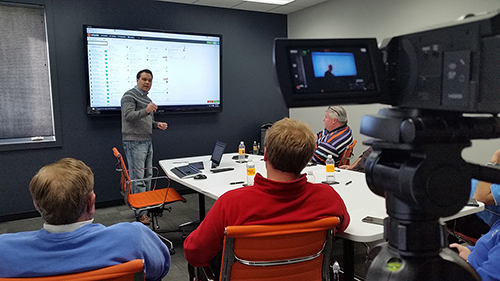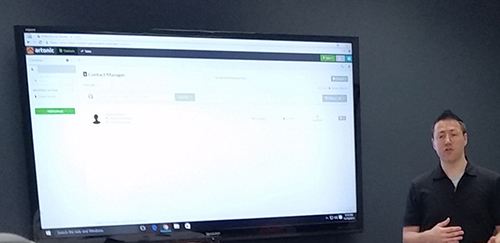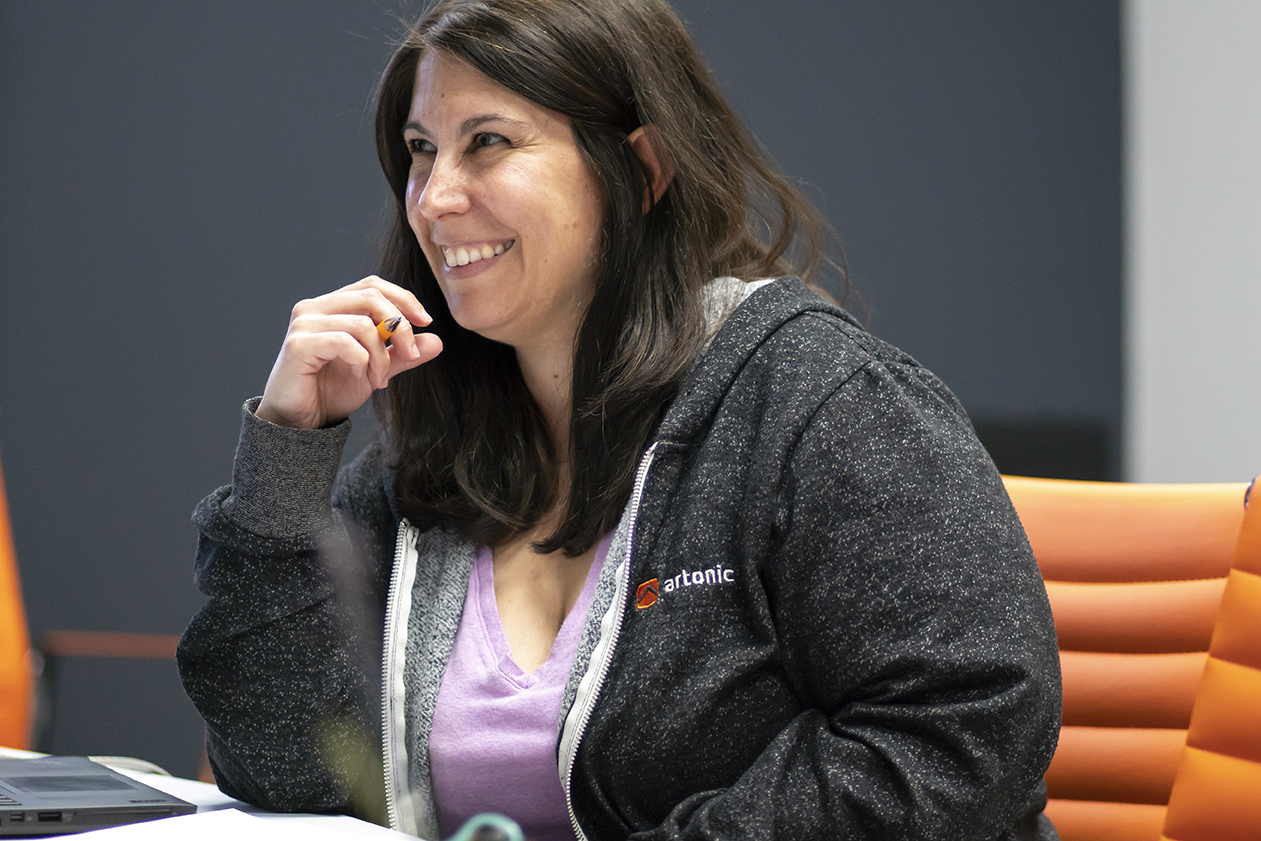Own Your Campaign
When it comes to inbound marketing, the important thing is to own your campaign. What does “own your campaign” mean? It’s taking a proactive role in your marketing efforts – it’s putting in as much into the campaign as you want to get out of it.
A company that owns its inbound marketing campaign is a powerful force – it’s focused, and its team is on-board with the initiative and contributes regularly to the campaign.
Over the next few weeks, I’ll discuss how to own your campaign from beginning to end. Ownership is the lifeblood of your inbound campaign – the foundation of its success. And ownership isn’t always easy. But it is worth it. In the articles that follow, I’ll dissect topics like Content Creation, Goal Setting, Target Audience R&D, and more inbound-related topics.
Today we’ll focus on team training and motivation.
Is This Important to Me?
Why does this matter so much? When you “own your campaign,” what are the results? How much does ownership really impact an inbound campaign?
After all, if we can’t quantify the value, then why bother?
Because you’ll make more money. Period.
Think about it. Which team is more likely to have more leads, sales, and repeat customers: 1) the motivated, trained, positive team, or 2) the team that has no central goal and is apathetic and fragmented?
Really, you don’t need stats to prove the point. But, since we love stats, let’s have a few:
41% of customers are loyal to a brand or company because they consistently notice a positive employee attitude, while 68% of customers defect from a brand or company because of negative employee attitude.
Companies that actively engage workers profit more than those that don’t. If you look at Fortune’s “Best 100 Companies to Work For,” these organizations have averaged an amazing 200.6% return over the past decade.
Organizations with higher than average levels of employee engagement realized 27% higher profits, 50% higher sales, 50% higher customer loyalty levels, and 38% above-average productivity.
So, that’s why I recommend that companies that adapt an inbound campaign train and motivate its employees.
Inbound Kickoff Meetings
 At Artonic, the first step we take with an inbound marketing client is to schedule a Kickoff Meeting. This meeting is the first team meeting we enjoy with our client and allows us to meet the team and set expectations.
At Artonic, the first step we take with an inbound marketing client is to schedule a Kickoff Meeting. This meeting is the first team meeting we enjoy with our client and allows us to meet the team and set expectations.
Our Kickoff Meeting includes a review of the information we’ve gathered about our client – from basic contact information to SMART goals. We ensure that what we’ve put together is correct, and we ask questions about anything that we don’t understand. This is the first in a series of alignments to the campaign – making sure that we know the basics about our client.
We also outline Artonic’s process, Artonic’s and our client’s roles, and the schedule for the next several months. This is our next alignment – defining who does what and when.
The Kickoff Meeting ends with a Q&A session to wrap up any loose threads, then we’re done!
Marketing Automation Software Training
The next step we take after our Kickoff Meeting is our Marketing Automation Software Training. This is a training session for our client’s internal team (managers, sales, marketing, etc. – the more the merrier!). This training session varies depending on the structure of our client’s internal team and its role in the inbound marketing campaign.
But it always includes an introduction to the concept of inbound marketing as well as motivation to really take ownership of the company’s inbound campaign.
It’s yet another alignment – raising the team’s energy to match our own. Why? It’s because getting the team on-board is so crucial to the success of the inbound campaign. It’s so important to us that our owner has been known to offer incentives if the company’s employees create content and gain certification in inbound marketing.
Goal Creation
Getting managers and employees on-board during goal creation could not be more important. Why? Because if your team isn’t aware of your goals and strategy, how will they achieve the results you hope for?
It seems obvious, but…
Only 40% of employees are well informed of their company’s goals, strategy, and tactics.
If your company falls into the 60% that is uninformed, it’s time for you to change. You must motivate your managers and employees to buy into the inbound marketing philosophy and support it, or your efforts will fizzle and die.
During our Goal Creation Session, we outline SMART goals – Specific, Measurable, Achievable, Relevant (aka Results-driven), and Time-bound.
(SMART goals are a business basic – if you’d like more information, please see Wikipedia’s article on SMART criteria.)
The goals are yet another way we align our efforts with our client’s team – if we’re all aware of and supporting these goals, we have a much higher chance of success.
Target Audience
Our Target Audience Meetings are some of my favorite – I really enjoy getting to know my client’s target audience, because it makes strategy so much more meaningful and easier.
This session begins with a report on research and demographic information about a client’s target audience. We also explore topics such as persona development, expectations, social media platforms, and even personality traits and values.
This session is intended to paint the most realistic picture possible of our target audience, so that everyone on Artonic’s team and our client’s team is aware of who the customer really is.
Automation & Workflows
 This meeting includes the creation and review of actual workflows within our inbound marketing software. This allows our client’s internal team to understand the way that website traffic will convert into leads, and leads into sales, and so on. During this session we map out the marketing automation campaigns that we’ve set up – from the original “trigger” to the following emails and content offers. We outline specifics about each campaign, including the goal of each campaign, which persona we’re targeting, and which piece of content will act as the trigger.
This meeting includes the creation and review of actual workflows within our inbound marketing software. This allows our client’s internal team to understand the way that website traffic will convert into leads, and leads into sales, and so on. During this session we map out the marketing automation campaigns that we’ve set up – from the original “trigger” to the following emails and content offers. We outline specifics about each campaign, including the goal of each campaign, which persona we’re targeting, and which piece of content will act as the trigger.
The client’s team is now aware of Artonic’s initiatives on its behalf – and it can support those initiatives to further strengthen the results.
Client Check-ins

We also make sure to schedule regular check-ins with our client (first, we ask who our main client is, what the best way to reach her is, and how often she likes to be contacted). This ensures that Artonic always knows what’s going on at our client’s location, and our client always has access to Artonic’s team. This keeps things perfectly… (you got it) aligned.
Own It
Each meeting is intended to train and motivate clients – from owners and CEOs to marketers and salespeople – so that you can truly own your campaign! Because ownership is actually freedom… freedom to create and educate your customers, freedom to create a strong brand for your company, and freedom to be the authority in your industry.
So what are you waiting for? Get out there and OWN it!
Research
Thank you to BH Engagement for the great stats, which were provided by Gallup, the Incentive Federation, the Incentive Research Foundation, Maritz, and World at Work.


